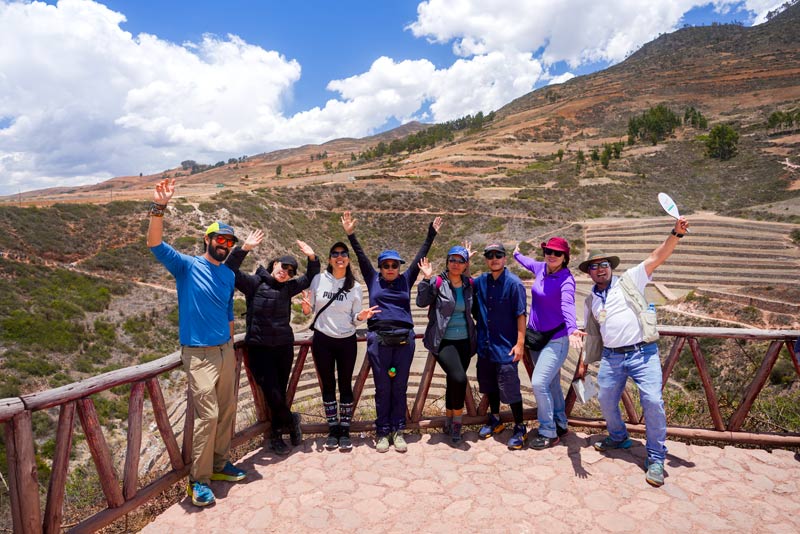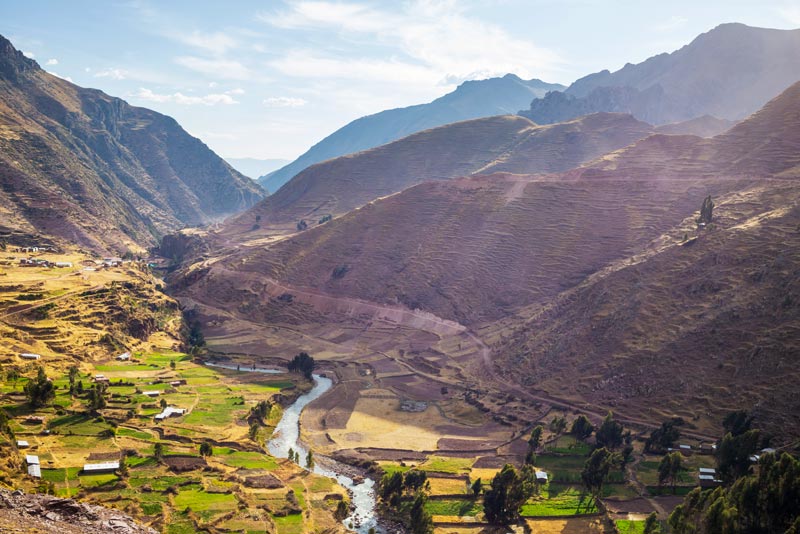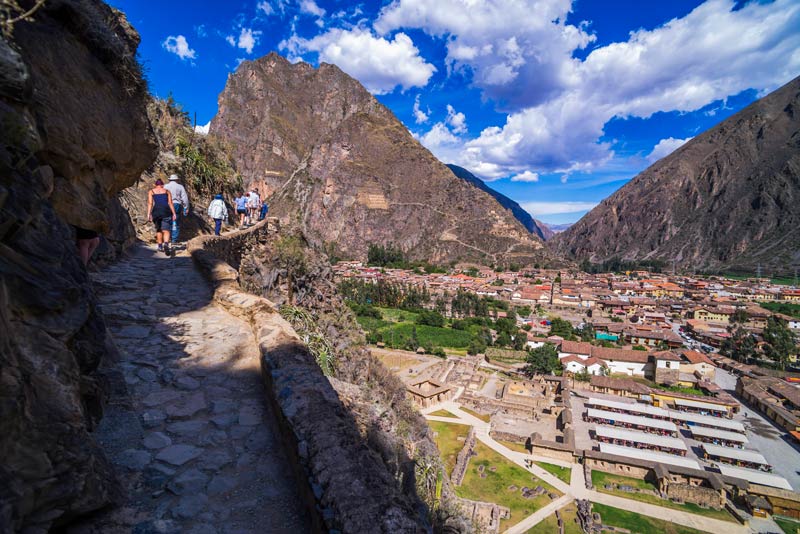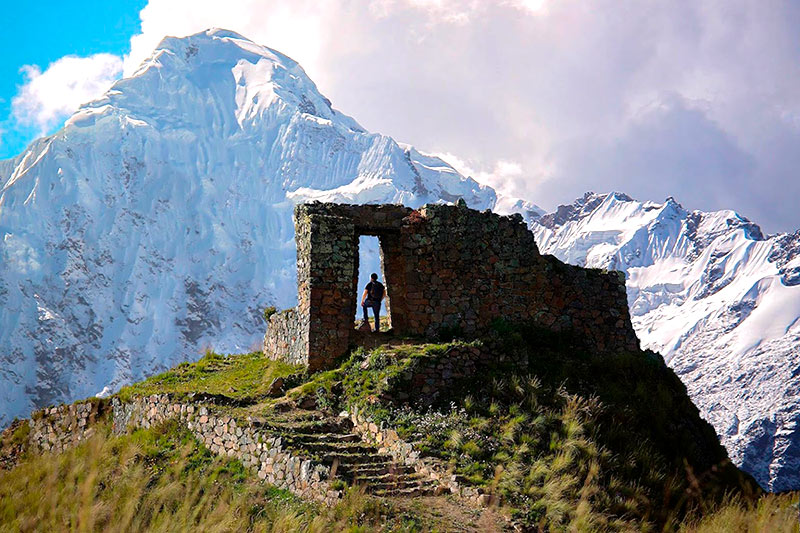How is the tour to the Sacred Valley of the Incas?
Immersing yourself in a journey through the Sacred Valley of the Incas is one of the best things you can do during your stay in Cusco. Along trails filled with mountains, rivers, forests, Inca citadels, and traditional villages, you’ll experience a privileged perspective of Andean culture. Many tours are designed to immerse you in structures and stories that promise to amaze you. Learn what you’ll experience and what they’re like. Don’t miss the opportunity to experience the Sacred Valley.
- The Sacred Valley of the Incas
- What is the tour of the Sacred Valley of the Incas like?
- What is the Sacred Valley VIP tour like?
- Attractions of the Sacred Valley of the Incas
- Characteristics of the Sacred Valley of the Incas
- Tips for your trip to the Sacred Valley of the Incas
- Frequently Asked Questions
The Sacred Valley of the Incas
Just an hour from Cusco’s city center, the beautiful landscapes of the Sacred Valley of the Incas begin. With iconic towns like Pisac, Ollantaytambo, Chinchero, and Urubamba, among others, you’ll be immersed in countless activities that will enrich your trip.
Since the Inca era, this valley has been very important, not only for the passage of the Urubamba River, but also for the incredible variety of microclimates that allowed for abundant agricultural production. This is why they decided to build their most important citadels throughout the Sacred Valley, along with the mysticism that permeates the entire area.
The snow-capped mountains of Salkantay and Veronica were considered deities by the Incas; today, they are a fundamental part of the incredible landscape. The river, the mountains, and the land are still considered sacred by the Andean people, who maintain the same respect and veneration they held in Inca times.
Many people choose to visit the Valley during their first few days in Cusco because it’s at a lower altitude, allowing you to acclimatize and avoid altitude sickness. It’s also a must-see for visiting Machu Picchu, since you can take the train from Ollantaytambo to reach the famous citadel.
Acclimatize in the Sacred Valley of the Incas
If you’re planning a trip to Cusco, the Sacred Valley (2,800 meters above sea level) is the ideal option for acclimatizing during your first few days of your stay. Its temperate climate, located at a lower altitude than the city, allows you to gradually acclimatize and avoid altitude sickness. Visiting places like Rainbow Mountain (5,200 meters above sea level) or Humantay Lagoon (4,200 meters above sea level) are recommended during your final days of your trip.
What is the tour of the Sacred Valley of the Incas like?
Discovering the Sacred Valley on a tour allows you to see the most important Inca citadels along the way. It’s a full-day trip that usually starts early in the morning, around 7:30 a.m., so we can have breakfast beforehand.
After being picked up from your hotel or residence in Cusco, your first stop will be the Taray viewpoint, where you’ll enjoy a few minutes of stunning views of the Sacred Valley. Afterward, we’ll head to the archaeological site of Pisac, approximately an hour and a half away. Here, you’ll explore its main temples and buildings, which blend harmoniously with nature. You’ll also be able to visit the famous Pisac artisan market to purchase souvenirs.
The trip then continues to Urubamba, the capital of the Sacred Valley, where we will enjoy a buffet lunch featuring a wide variety of Peruvian cuisine. Urubamba is located one hour from Pisac.
The next stop is the town of Ollantaytambo, 30 minutes from Urubamba. We’ll visit the Inca fortress and its impressive terraces; the town is truly a marvel. As our last stop, we’ll head to Chinchero, a traditional town steeped in culture. Here, we’ll explore its archaeological site, which was the ancient palace of Inca Túpac Yupanqui, as well as its famous artisan center, where we’ll learn more about its craftsmanship and traditions.
The tour ends around 6:30 p.m., after an enriching journey that allows us to discover the most important archaeological sites in the Sacred Valley of the Incas.
What is the Sacred Valley VIP tour like?
The Sacred Valley VIP tour is a much more enriching experience that allows us to explore additional sites along the usual route. Specifically, the circular terraces of Moray and the Maras Salt Mines are additional stops that allow us to explore the Valley’s most iconic sites.
The tour begins with a visit to Chinchero, a departure from the usual Sacred Valley tour. Afterward, we’ll visit the Maras salt mines and the Moray terraces, both located a short distance away. We’ll then follow the usual route, visiting places like Ollantaytambo, Pisac, and stopping for lunch in Urubamba.
The trip is the same length, but the stops to explore the sites will be shorter. The tours are designed to help you make the most of every day of your stay in Cusco. There are also options to visit each of these sites in more detail, so the tour can be tailored to your itinerary and desires.
Attractions of the Sacred Valley of the Incas
Throughout the Sacred Valley, we’ll discover impressive sites that combine architectural attractions with natural destinations. Among the most impressive and unmissable destinations are:
Archaeological fortress of Ollantaytambo
It was an Inca military, religious, and administrative center. From here, you can admire its impressive stone walls, as well as its agricultural terraces.
Pisac Archaeological Center
It is known for its agricultural terraces and Inca temples. Here you can see one of the famous Intihuatanas and learn about the mysticism that surrounds its history. You can also admire the breathtaking landscapes of the entire Sacred Valley.
Chinchero Archaeological Park
Here we can visit the ancient temple of the Inca Tupac Yupanqui, along with archaeological remains that dominate the landscape, blending with nature.
Circular platforms of Moray
These terraces served as a kind of Inca laboratory for agricultural production at different altitudes and microclimates.
Maras Salt Mines
They are a series of salt pools that have been used since pre-Inca times. Today, they provide us with an impressive passageway and continue to serve as a natural resource.
Ceremonial center of Ñaupa Church
It’s a place associated with ceremonial practices. Here we’ll find monuments charged with energy and rich in symbolism, such as huacas, or sacred windows that resemble portals.
Huchuy Qosqo archaeological site
Located at the top of the town of Lamay, it offers a privileged view of the Sacred Valley and the opportunity to explore Inca residences steeped in history.
Inti Punku (Gate of the Sun)
To reach Inti Punku in Ollantaytambo, we will have to walk a steep path that will take approximately 6 hours (round trip), but we will discover a magnificent stone gate in honor of the sun, in the middle of a dreamlike landscape.
Characteristics of the Sacred Valley of the Incas
Learn about the wonderful geography and characteristics of the Sacred Valley of the Incas to enrich and prepare for your trip.
| Highlights of the Sacred Valley of the Incas | |
|---|---|
| Feature | Description |
| Location | The Sacred Valley is located in the department of Cusco, and includes iconic towns such as Pisac, Chinchero, Ollantaytambo, and Urubamba. It is located approximately 20 km from the city of Cusco. |
| Altitude | It varies between 2,800 and 3,000 meters above sea level, providing a temperate and pleasant climate. |
| Climate | It has a temperate climate, with average temperatures between 18°C and 22°C. |
| Geography | It is an Andean valley that follows the course of the Urubamba River, surrounded by mountains. |
| Urubamba River | A major river that runs through the valley, known as the “sacred river” of the Incas. |
| Flora and Fauna | The valley is home to a wide variety of plants and animals, including endemic species. |
| Archaeological Sites | It is home to several Inca sites of great historical importance, such as Ollantaytambo, Pisac, and Chinchero. |
| Cultural Heritage | The Sacred Valley was an agricultural and religious center for the Incas. Today, it remains an important site for Andean culture. |
Tips for your trip to the Sacred Valley of the Incas
- Touring the Sacred Valley is ideal during your first few days in Cusco, to acclimatize in a suitable place and avoiding altitude sickness.
- Explore all the destinations in the Sacred Valley on different days; exploring them at a leisurely pace will enrich your experience.
- Visiting the Sacred Valley during the dry season (April to October) will allow you to experience clearer landscapes, but with greater tourist influx. Visiting during the rainy season (November to March) may experience significant rainfall, but will allow more space to explore each area without any problems.
- Having a sensitive attitude when visiting the main Inca temples will allow you to experience ancestral energy, which will add greater value to your visit.
- Discover firsthand experiences in local communities to learn more about Andean culture and traditions.
- Take advantage of your trip and relax from your routine by reflecting in peace amidst beautiful landscapes.
- Thank Pachamama (Mother Earth) for allowing you to experience such impressive places in the Sacred Valley. It’s part of the local culture and allows you to feel more connected to nature.
- You can plan a tour visiting the main Inca cities and temples in the Sacred Valley. You can decide your own itinerary. Consult with our advisors and discover the magic that awaits you.
Frequently Asked Questions
1) What does the tour to the Sacred Valley of the Incas include?
The traditional tour includes transportation from Cusco, a professional bilingual guide, admission to the main archaeological sites (Pisac, Ollantaytambo, and Chinchero), and a buffet lunch in Urubamba. It typically takes place in a single day, starting early in the morning and returning in the afternoon.
2) What is the difference between the classic tour and the Sacred Valley VIP tour?
The classic tour covers iconic sites such as Pisac, Ollantaytambo, and Chinchero, while the VIP tour also includes a visit to the Maras Salt Mines and the Moray terraces.
3) How long does the tour to the Sacred Valley of the Incas last?
The tour generally lasts all day. It starts around 7:30 a.m. and ends around 6:30 p.m., allowing you to enjoy all the main attractions in one trip.
4) What is the best time to visit the Sacred Valley of the Incas?
The best time to visit is during the dry season, from April to October. During these months, the days are sunny and the roads are in better condition.
5) Can you visit Machu Picchu from the Sacred Valley?
Yes, from Ollantaytambo you can take the train that takes you directly to Aguas Calientes, the gateway to Machu Picchu.
6) Is it necessary to acclimatize before taking the tour?
Although the Sacred Valley is at a lower altitude than Cusco, it’s recommended to spend a day or two adjusting in Cusco or the Valley itself to avoid altitude sickness and better enjoy the trip.
7) Are there options for private tours to the Sacred Valley?
Yes, private tour services are available that allow for a more personalized experience, ideal for those looking to explore the valley at their own pace and with greater flexibility in their itinerary.
8) Can I do additional activities in the Sacred Valley?
In addition to the cultural tour, you can enjoy activities such as mountain biking, rafting on the Urubamba River, hiking to less-crowded sites, or experiencing life in local communities.
9) When is the dry season in Cusco?
The dry season in Cusco begins in April and lasts until October.
10) When is the rainy season in Cusco?
The rainy season in Cusco begins in November and lasts until March.
Advice from people who have been there
 By: John D.
By: John D.“Tour of the Valley“
“My tour was amazing, I had only a few days in Cusco and I would have liked to know better each of the places I visited, but for sure I will do it on my next trip.“
By Ticket Machu Picchu – Last updated, May 8, 2025



